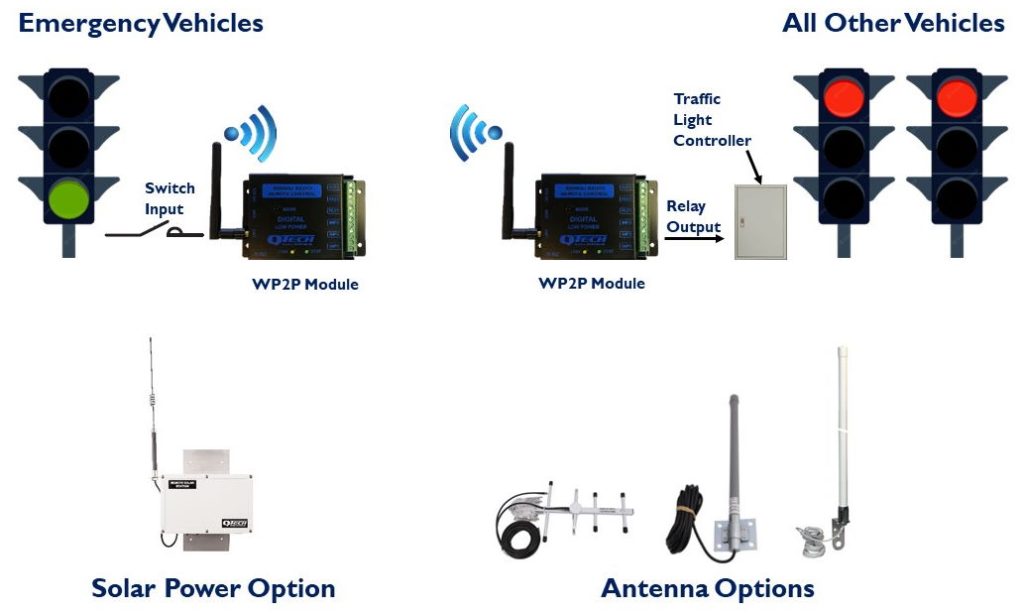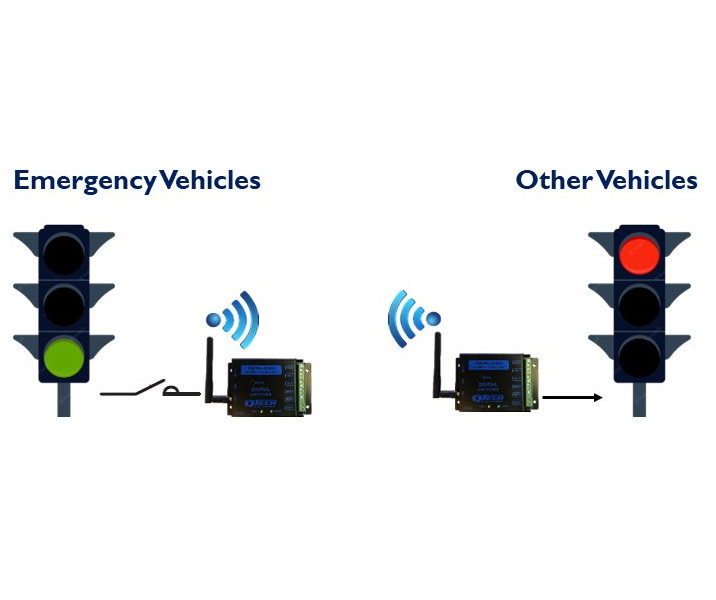Modern traffic light control systems use a sophisticated electronic controller to help meet the complex requirements of regional traffic authorities.
These traffic light controllers have multiple external inputs to enable special configurations for railway crossings, pedestrian requests, automated cycle lanes and emergency vehicle overrides.
The project requirement was for the driver of the emergency response vehicle to press a button as they leave the station. The button press needs to override the current traffic light sequences, giving the emergency vehicle green traffic lights.
This button operates one of the digital inputs on the WP2P module and also opens the garage door.
At the traffic controller, the output of the second WP2P module is wired to the controller. When activated, the controller overrides all the nearby traffic lights and performs the required interlocking. This ensures that emergency vehicles have green traffic lights and right of way through all the local traffic signals. This helps to safely speed up their response time and gives the other road users a clear signal.

The WP2P low power radio system has a range of several kilometres with optional antenna systems. It can be used in many other applications such as irrigation and pump control, flow meter pulse transmitting or flood detection systems.
Solar powered options are also available for applications where a 12-24V DC supply is not available.
Another popular application is the control of stop – go signals in industrial warehouses where fork lift trucks operate.
The WP2P can be used to indicate that a fork truck is moving in the warehouse to people in the yard outside. The people in the yard are advance warning that the fork truck is operation. This helps control the site hazards by separating them and strengthens your site Health and Safety plan.
Having an additional early warning system and not just the traditional “sound your horn as you go through the door” signal is an advantage for many sites.

